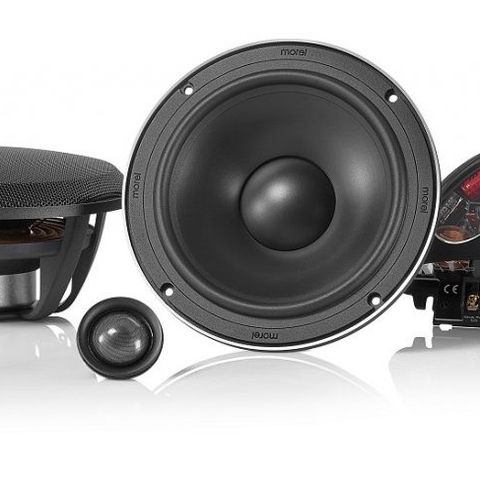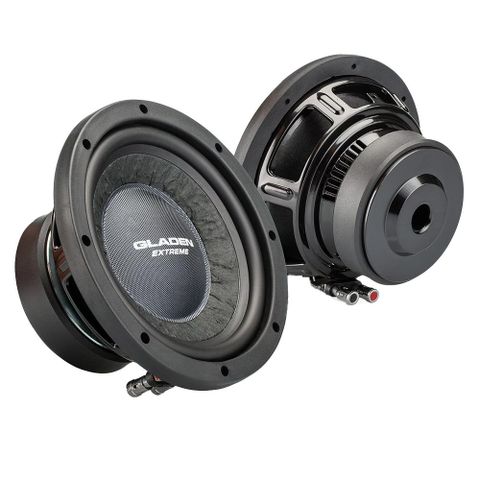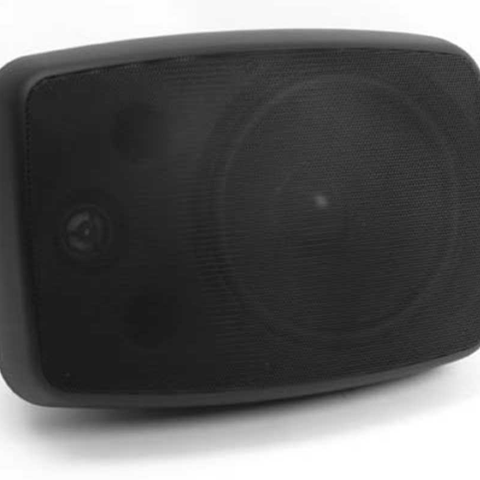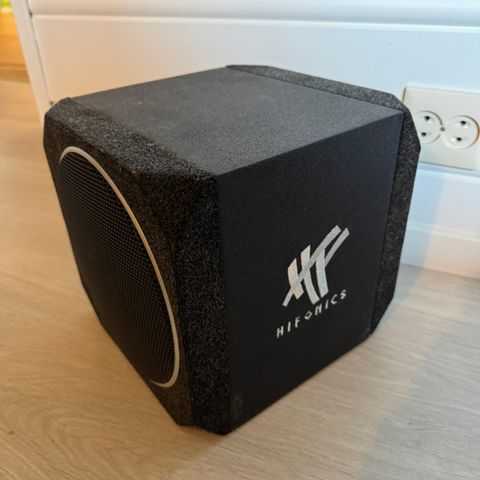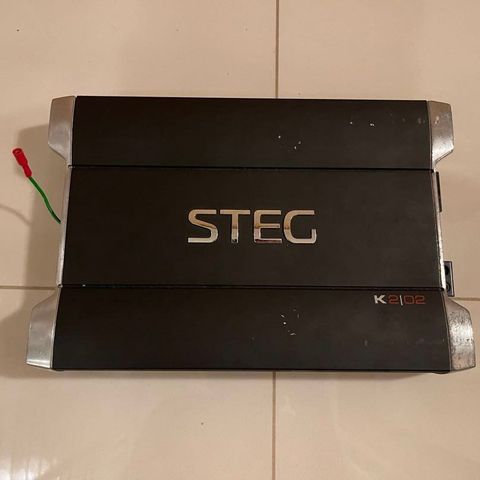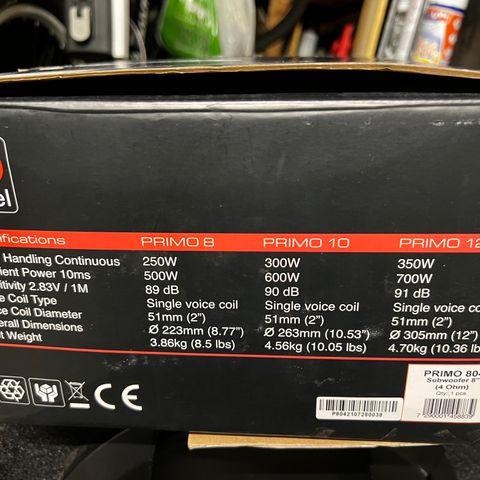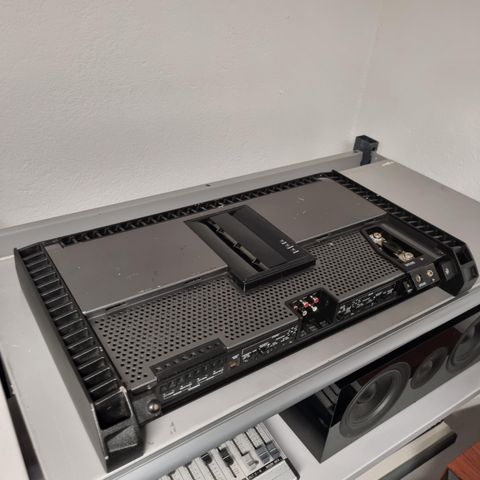Bildegalleri
AudioFrog A600.1D Ultra kompakt forsterker på 450Watt i 4 ohm og 600Watt i 2 ohm
Beskrivelse av varen
Power Output @ 4 Ω: 450 Watts x 1 Channel
Power Output @ 2 Ω: 600 Watts x 1 Channel
THD @ Rated Power: 0.1%
THD @ 20% of Rated Power: 0.02%
Signal to Noise Ratio @ 1 Watt: 80 dB
Signal to Noise Ratio @ Rated Power: 108dB
Frequency Response (=/- 1dB): 10 Hz – 400 Hz
Damping Factor @ 4 Ω: >600
Input Type: Differential
Input Sensitivity (Line Level Inputs): 0.5 Vp – 10 Vp
Maximum Input Voltage (Speaker Level Inputs): 30 Vp
Input Impedance (Line Level Inputs): 10 kΩ
Input Impedance (Speaker Level Inputs): 1.2 kΩ
Turn On Modes: Signal Sense, 6 V Offset Detect, Remote Turn On
Signal Sensing Turn On Threshold (Line Level Inputs): 45 mVp
Signal Sensing Turn ON Threshold (Speaker Level Inputs): 800 mVp
Crossover Filter Slope: 12 dB/Oct
Crossover Filter Type: Bandpass, Highpass, None
Crossover Frequency Ranges: HP: 5 Hz – 40 Hz; LP: 50 Hz – 500 Hz
Phase Control: 0° – 180°
Bass Boost @ 45 Hz: 0 – 15 dB
Quiescent Current Draw: 0.9 A
Maximum Current Draw: 60 A
Required Power Line Fuse: 60 A
Dimensions: 210 mm x 126mm X 32 mm (8-17/64” x 4-61/64” x 1-17/64”)
Features
HiFi Class-D:
Sometimes great products are the result of a new invention—a new technological advancement that unlocks performance, features or applications never before possible. We have people like Henry Ford and the Wright Brothers to thank for those kinds of advancements.
More often, great products are the result of painstaking attention to detail and optimization of existing technology—someone got a whole bunch of stuff right—and the results are amazing.
Class-D amplifiers haven’t always been great. Early versions, which debuted nearly 30 years ago were fraught with problems: noise, instability, distortion were three significant shortcomings. The promise of class-D—smaller chassis and higher efficiency were always at the forefront but audio performance never quite approached that of Class-A or even Class-AB. Now, there are class-D amplifiers that rival the best performers in any class.
Thanks to a host of features and that painstaking attention to detail and optimization, Audiofrog HiFi Class-D amplifiers provide the high power, low noise and low distortion performance audio enthusiasts expect in small and rugged chassis that are easy to install and can be made to fit nearly anywhere.
Four Layer PCB (Printed Circuit Board):
Board layout is a key component of a high fidelity amplifier design, especially when miniaturization is a key feature. Audiofrog HiFi Class-D amplifiers incorporate a four layer PC board that helps to isolate the magnetic circuit in the power supply and Class-D modulators from the amplifier’s preamp and audio sections. Small I/E transformers oriented to place the preamp circuit in a magnetic null replace the toroidal transformers often used in larger designs. High speed switches responsible for power supply and output voltage are located on the opposite side of the board from the preamp and audio circuits and are isolated by an internal shield layer. Heat is transferred from the switches on the bottom of the board to the heat sink on the top through heat sink pads incorporated into the top and bottom PC board layers.
Audiofrog HiFi Class-D amplifiers provide noise free performance unmatched by similarly sized high power class-D amplifiers.
Ultra High-Frequency Switching:
Ultra High-Frequency Switching in our new HiFi Class-D designs move the power supply switching frequency to 100kHz and the class-D modulator frequency to 420kHz. This allows for dramatically smaller magnetics and smaller transformers make a smaller amplifier possible. In addition, the higher modulation frequency makes it possible to move the output low pass filter frequency an octave higher than many other class-D designs. The output filter in Audiofrog’s new HiFi Class-D designs is set to 40kHz rather than the usual 20kHz.
Because the output filter in a class-D amplifier is a passive low pass filter, it has to be designed for a specific load—usually 4 ohms. When measured with other loads, the frequency response changes at and around the filter frequency. A higher resistance load creates a peak at the filter frequency and a lower resistance load causes attenuation at and around the filter frequency. This has long been a criticism of class-D design.
In the example below, the performance at 4 Ohms is within about 3dB of flat response. At 8 Ohms, the underdamped filter causes almost a 3dB peak at 20kHz, which can amplify audible high frequency noise present in the system. At 2 Ohms, 20kHz is attenuated by nearly 8 dB.
Integrated Feedback:
Based on IR’s 2092 integrated class-D audio driver, feedback through an operational trans-conductance amplifier provides an analog version of a sigma-delta convertor, which shifts error in the audible frequency range upwards to the inaudible high-frequency spectrum, dramatically reducing noise in the signal. Dead time is programmable for optimization of zero-crossing with minimum distortion.
Heat Sink Shield:
Audiofrog HiFi Class-D amplifiers include a dual purpose heat sink that also acts as an EMI shield. The heat sink and the bottom plate are electrically connected to each other and to one of the internal PCB layers through a trace that runs the perimeter of the board on the top and on the bottom. Combining the sink, the bottom panel and a PCB layer help to minimize EMI (electromagnetic interference) emitted from the amplifier, which prevents degradation of the radio’s FM reception.
Compared to many other class-D amplifiers, Audiofrog HiFi Class-D amplifiers emit less noise, which preserves FM reception and minimizes radiated noise which may be picked up by other audio components.
Differential Inputs:
Speakers aren’t resistors. Speakers are reactive loads and when discussing speakers as amplifier loads, we use the term “impedance”. The impedance of a speaker is not a simple number like a resistor. At and around the speaker’s resonance, the speaker is also a generator of electricity and that generation creates a peak in the impedance. Because the wire in the speaker’s voice coil is wound around a tubular former, the speaker’s voice coil has inductance, which resists a change in the flow of current and the impedance increases at high frequencies.
In cars, audio ground is often the same as power supply ground, which is chassis ground. Chassis ground is also ground for every switch and motor in the car and also for the alternator. Many previous amplifier input topologies used single-ended inputs, which were notorious for creating ground loops, for susceptibility to radiated noise and for susceptibility to noise on the power or ground circuits. It doesn’t matter how quiet the amplifier circuit is if the input is noisy. With single-ended inputs, shielded cable should be used. The shield is designed to prevent noise from making its way to the signal conductor in the center.
Audiofrog HiFi Class-D amplifiers include differential inputs suitable for connection to single-ended or balanced line level sources up to 10V or speaker level sources of any kind up to 30V. Speaker level and line level inputs also include signal sensing turn on for applications in which no remote turn on lead is supplied by the vehicle’s head unit.
Flex Crossover:
The A600.1D mono amplifier is designed to drive subwoofers and includes a high pass filter with a frequency range from 5Hz to 40Hz suitable for use as a subsonic filter for vented enclosures or for use with small subwoofers. The low pass filter is adjustable between 50Hz and 500Hz making it appropriate for subwoofers or for midbass drivers. When used with an outboard processor or DSP, the filters can be selected at 5Hz and 500Hz to keep the onboard crossovers well outside the subwoofer’s bandwidth.
In addition, the A600.1D includes a phase adjustment control to make getting the phase right between the subwoofer and the midbass drivers easier, even in systems without a DSP.
For mer info https://www.audiofrog.com/a600-1d-high-fidelity-class-d-amplifier/
Brukerprofil

Du må være logget inn for å se brukerprofiler og sende meldinger.
Logg innAnnonsens metadata
Sist endret: 24.1.2025 kl. 18:37 ・ FINN-kode: 251559795






